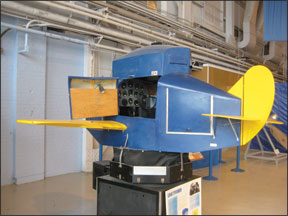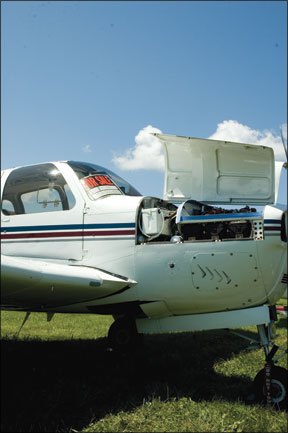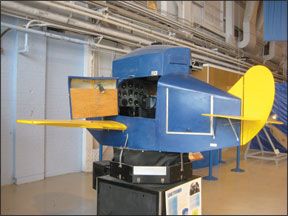Opening the June 2013 issue, I was met with a lovely bit of nostalgia. The photo of the Link Trainer on page 5 could have been of the unit in which I took my first flight training, the summer of 1967.
At the University of Illinois’ Institute of Aviation, I spent two hours in one of these before getting into an aircraft (a Champ 7FC). Over the summer of instruction, we went back to the Link again and again to hone skills. I had 11.2 hours total in the Link, and 30 hours total in the aircraft, when I got my license. I’m not sure how many hours of Link and aircraft time I had before I was allowed to fly visually. Of the 7 hours in the aircraft prior to solo, nearly half were behind polarized glasses and windscreen plastic.

288
I consider the superb instruction I got there as the reason I have what skills I possess today. Thanks for the memories!
Ken Kokjer,
Fairbanks, Alaska
Downwind Turn? Really?
Please, this is basic physics. Abruptly turning from a headwind, as described in the sidebar accompanying June’s Accident Probe, “The Downwind Turn,” does not cause wind shear. If the wind direction and speed are constant, the airplane flies exactly the same as in no-wind conditions.
If there is an issue, it’s that the pilot sees his ground track will lead to an overshoot, and without thinking about it, he increases his bank, leading to an inadvertent stall. Real wind shear is seldom the issue.
Bob Turner,
Via e-mail
“If the wind direction and speed are constant, the airplane flies exactly the same as in no-wind conditions.” No argument. But those weren’t the conditions in the accident that article discussed.
Instead, the winds were observed, at the surface, to be from 220 degrees at 21 knots, with gusts to 25. The aircraft in question, a Cessna 172R, has a published flaps up, wings-level stall speed of 51 KCAS, roughly twice the observed surface gust.

288
We’ll commit to researching and publishing a lengthier article on this overall topic in the near future.
Safer Ownership
Mike Hart’s article, “Is Owning Safer?” (June 2013), struck a chord with me. Prior to buying my very own high-performance single, I flew a series of airplanes in clubs and partnerships. I learned it’s easy to get complacent when flying the same airplane to and from the same locations.
“Perhaps the biggest safety gain from ownership is familiarity,” he wrote. But familiarity breeds contempt, and that’s not always a good thing when flying an airplane. The recommendations Mike’s article makes, especially concerning maintenance and the overall responsibilities of aircraft ownership, are good ones. Anyone contemplating their first aircraft purchase would do well to study this article. Thanks!
Tom Gibson,
Via e-mail
More Gadgets, Please
Since your recent article, Gadget Flight Rules” (February 2013), I’ve been anxiously awaiting additional articles on using tablets and the like in the cockpit. I already use an iPad running ForeFlight, but I’m interested in what else might make the cockpit experience easier and more productive. Please consider covering these topics.
Samuel Richards,
Via e-mail
Your wish is our command! Look for additional articles on cockpit gadgets in coming issues.




